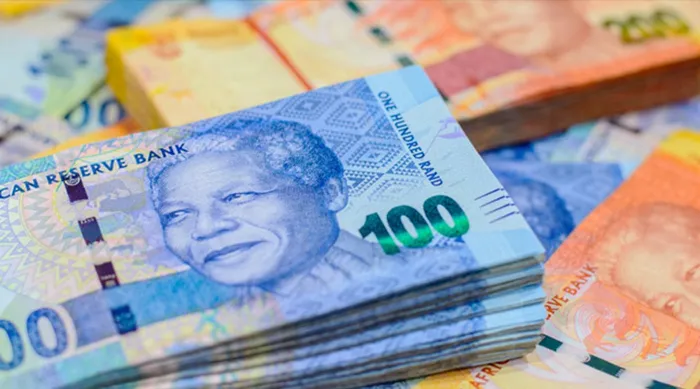Absa sees South Africa’s 2025 GDP growing 1.3% amid mixed economic signals

Absa in its South Africa Q4 25 Quarterly Perspectives indicated that the full-year 2025 forecast for Gross Domestic Product (GDP) is at 1.3%.
Image: File
Absa in its South Africa fourth quarter 20225 Quarterly Perspectives indicated that the full-year 2025 forecast for gross domestic product (GDP) is at 1.3%. Absa said that the forecast for real GDP growth is 0.4% quarter on quarter for Q3 and Q4 2025. Experts have agreed with the findings.
Absa said their 2026 forecast is 0.2 percentage points (pp) higher at 1.8%, partly reflecting its expectation of earlier rate cuts, while its forecast for 2027-29 is also marginally firmer at an average of 2.1% (+0.1 pp).
“The external environment is largely a tailwind for South Africa. Precious metals prices have continued to rally, exceeding our previous expectations. Global economic growth is also showing resilience. Meanwhile, the Fed’s (Federal Reserve) resumption of its easing cycle, with expectations of more cuts, should also be supportive, in our view,” it said.
Absa added that US-South Africa relations remain a sticking point, both from a trade perspective and headline risk more broadly.
“Reforms will help to strengthen resilience, but progress remains gradual. The formal adoption of a 3% (+/- 1 pp) (inflation) target is an important reform with potential for significant macro impact. Meanwhile, the November update on Phase II of the Operation Vulindlela (OV) shows some movement in the seven priority reform areas, but the progress is uneven. Outside of OV, SA’s removal from the FATF greylist is a positive development, while the court ruling on Transnet’s Durban Pier II seems to clear the path for the private-public upgrade partnership to proceed,” it said.
Absa said the recent rise in headline CPI inflation has been less than expected, thanks to a firmer exchange rate, lower oil prices, and some favourable outcomes in food prices. In the near term, it expects headline CPI inflation to rise slightly to peak at 4.0% (previous: 4.3%) in December, due to base effects in fuel and food. Further out, a broad move to sustainably lower inflation seems likely to be made more difficult by administered prices and signs of ongoing wage pressure, but the formal adoption of a 3% inflation target should help expectations adjust.
Absa added that its baseline forecast is for headline CPI inflation to average 3.7% in 2026 and 3.6% in 2027.
“We are bringing forward our expectations for rate cuts. A lower near-term CPI profile, a lowering of the official inflation target by the finance minister, some further moderation in inflation expectations, and the credit ratings upgrade by S&P create conditions for rate cuts to resume sooner than we previously expected. Our baseline now pencils in a 25 bp repo rate cut this week, followed by a further cumulative 50 bp in 2026, and 25 bp in early 2027,” it said.
Absa said macro data already show resilience in spending, with retail sales and passenger car sales showing strong momentum into quarter three. “That said, risks to jobs in exporting manufacturing and agricultural sectors exposed to US tariffs and ongoing signs of consumer credit strain are important risks to watch.”
Professor Raymond Parsons, a North-West University Business School economist, said the Absa forecast was broadly in line with most other forecasts for 2025 and 2026.
“As 2025 is almost over, it is the growth forecasts for 2026 and beyond that now matter. The Absa forecasts for average GDP growth over the next couple of years appear slightly more optimistic than the 1.8% projected in the recent Medium-Term Budget Policy Statement. On present evidence, growth can be realistically expected to near 2% over the forecast horizon, which reflects a modest economic recovery. At the same time, fixed investment is still a lagging factor,” he said.
Parsons added that much higher levels of fixed capital investment are needed to boost the growth rate closer to the Government of National Unity’s target of 3% in the medium term.
“In the coming year, a sufficient number of firms must feel that economic and political factors justify their making fresh plans for expansion. Overall, therefore, the growth outlook is better and steadier, but not yet adequate,” he said.
Meanwhile, Professor Waldo Krugell, an economist at North-West University, said, “Where the economy showed almost no growth in quarter one, most forecasters are now expecting just enough to add up to 1.2% or 1.3% for the year. We take what we can get, but it is the same old problem that we have to be excited about decimal points. We need a much higher growth rate.”
Krugell added that recent optimism has been in response to hard work by the serious policy institutions - getting off the grey list, the fiscal consolidation, the lower inflation target.
“It shows what can be done. The key for investment and faster growth is to speed up all the other structural reforms,” Krugell said.
BUSINESS REPORT